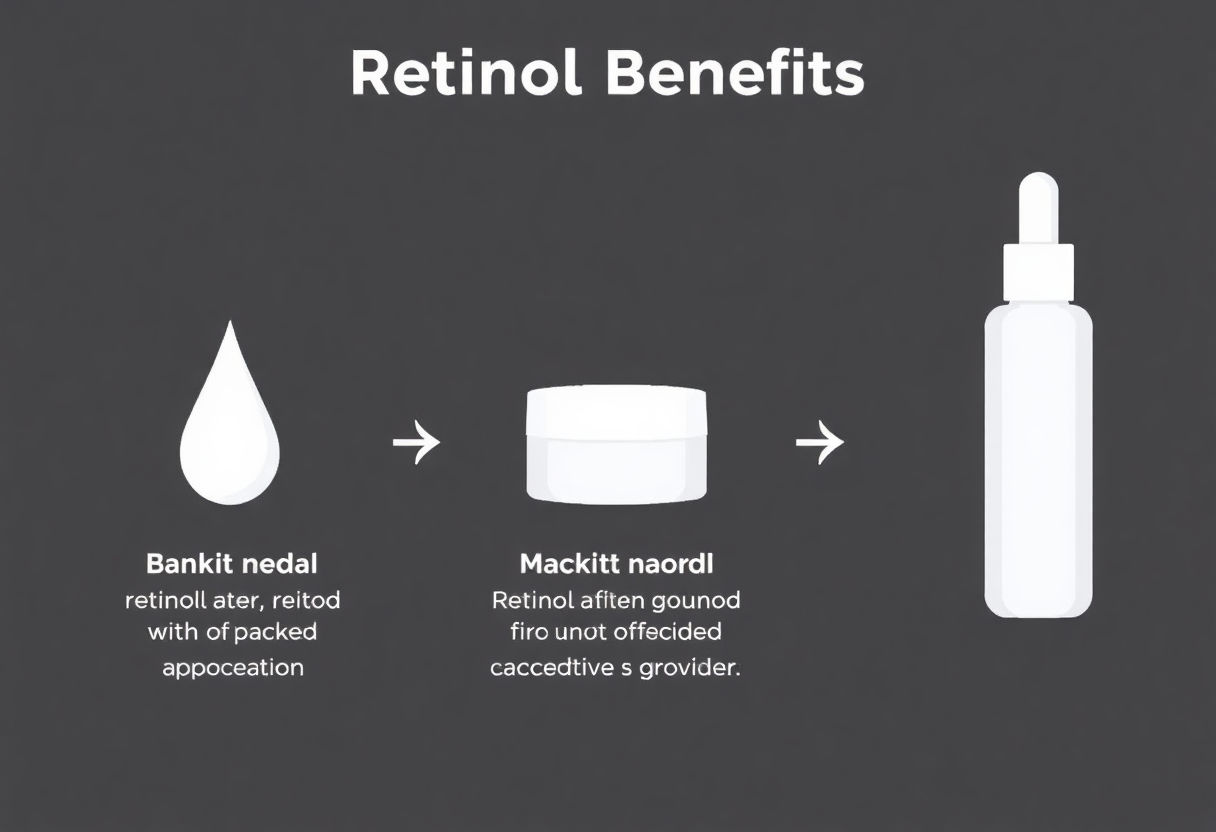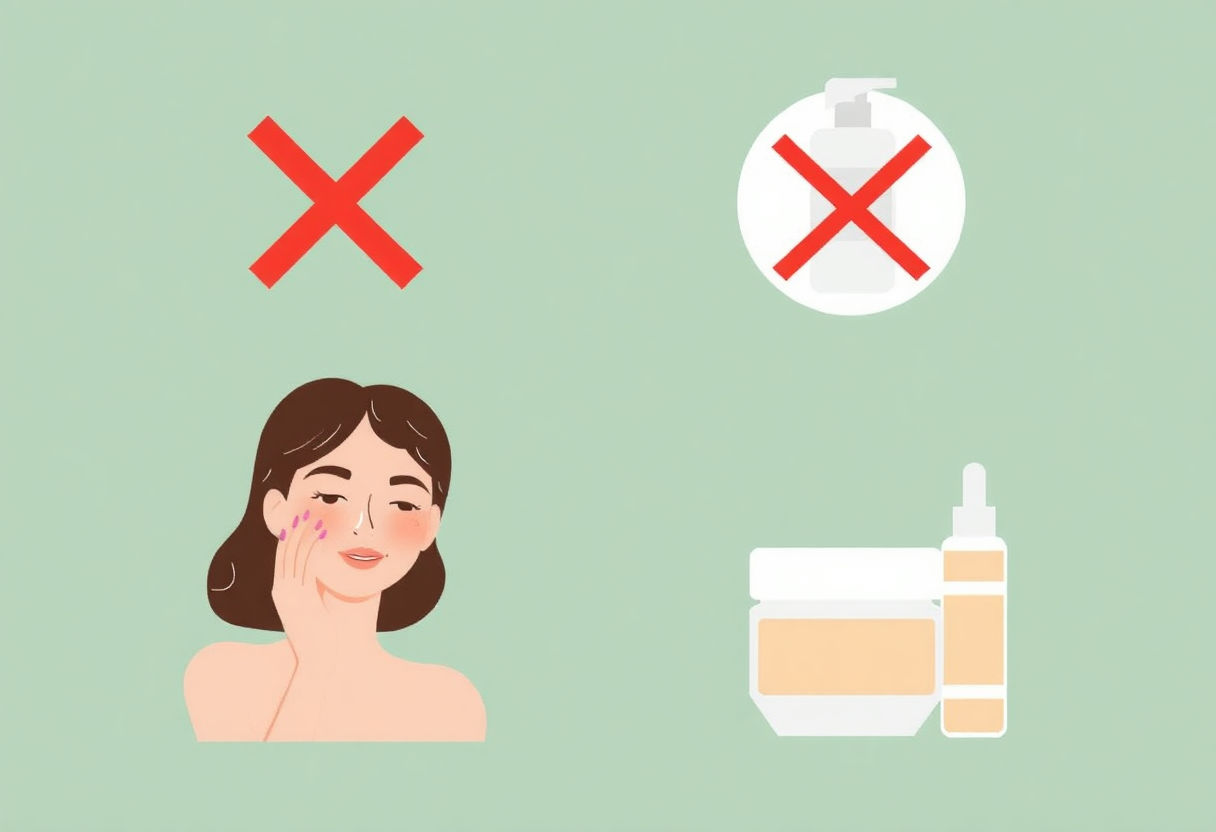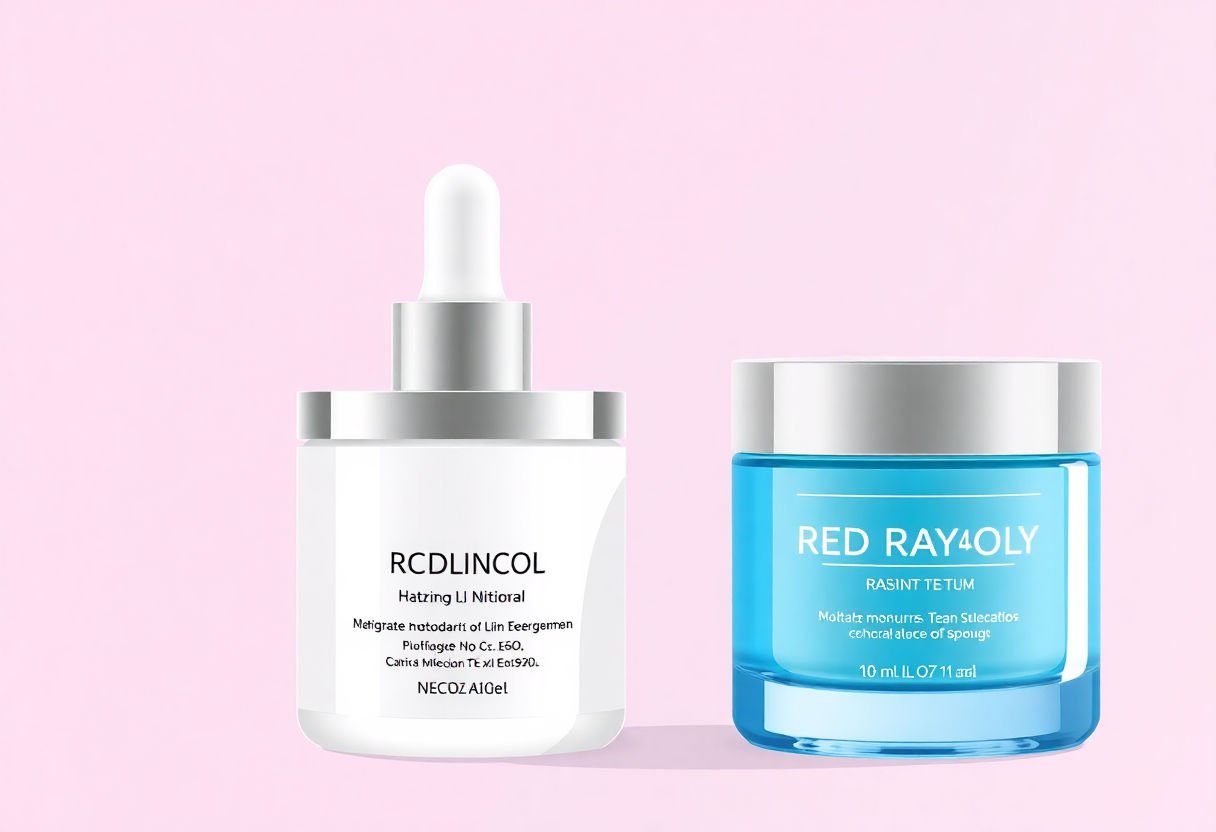Retinol, hailed for its exceptional skin-rejuvenating abilities, remains a cornerstone in skincare for those seeking to diminish wrinkles and promote a radiant complexion. Yet, its potency can be a double-edged sword, leading to dryness and irritation. The secret to unlocking its full potential lies in the artful pairing with a suitable moisturizer. This comprehensive guide will explore how to harmonize retinol with your skincare routine, the importance of selecting the right moisturizer for your skin type, and expert strategies to maximize results while avoiding pitfalls. Delve deeper to discover the transformative effects of this dynamic duo.
Key Takeaways
- Retinol, a powerhouse for skin renewal, should be paired with a moisturizer to combat potential dryness.
- Selecting a moisturizer that aligns with your skin type is crucial for optimizing the benefits of retinol.
- Gradual introduction of retinol into your skincare routine can significantly reduce the risk of irritation.
- Understanding the synergy between retinol and moisturizers can enhance skin texture and minimize common side effects.
- Avoiding common mistakes in retinol application can lead to healthier, more resilient skin.
Understanding Retinol: Benefits and Challenges

Retinol, a derivative of vitamin A, has garnered acclaim for its remarkable ability to rejuvenate skin. Among its foremost benefits is its capacity to reduce the appearance of wrinkles, granting skin a more youthful look. It promotes collagen production, which diminishes fine lines and bolsters skin elasticity. Additionally, retinol excels in smoothing skin texture, making it a preferred choice for tackling acne scars and hyperpigmentation.
However, the power of retinol is coupled with certain challenges. Its potent formula can sometimes lead to skin irritation, especially for those new to its use. Common side effects include redness, peeling, and dryness. These reactions occur as retinol accelerates cell turnover, shedding dead layers more rapidly than the skin is accustomed to.
To mitigate these challenges, it’s critical to commence with a low concentration of retinol, gradually increasing as your skin builds tolerance. This method can help in adjusting to its efficacy while minimizing adverse reactions.
Furthermore, combining retinol with a complementary moisturizer is pivotal. Not only does a moisturizer help counteract retinol-induced dryness, but it also soothes potential irritation. This symbiotic relationship is essential in achieving a balanced skincare routine, ensuring that users can reap the full benefits without discomfort.
To optimize retinol’s effects, consider applying it in the evening when skin enters its repair phase. This strategy not only maximizes its benefits but also offers your skin barrier the restorative care it necessitates, laying the groundwork for flawless, revitalized skin.
Choosing the Right Moisturizer for Your Skin Type

When integrating retinol into your skincare routine, selecting a moisturizer tailored to your skin type is crucial for maintaining hydration and preventing irritation. Here’s how to choose the right one for you:
-
Dry Skin: Individuals with dry skin might experience more pronounced dryness when using retinol. Opt for a rich, cream-based moisturizer that contains hydrating ingredients like hyaluronic acid, glycerin, and ceramides. These ingredients help lock in moisture and reinforce the skin barrier, mitigating retinol’s drying effects.
-
Oily Skin: For those with oily skin, the challenge lies in finding a product that hydrates without adding excess oil. Look for oil-free, lightweight gel moisturizers. Ingredients such as niacinamide can be beneficial as they help regulate oil production while maintaining moisture balance.
-
Combination Skin: Finding the right moisturizer for combination skin requires balancing hydration in both oily and dry areas. Choose a balancing moisturizer that provides adequate hydration without feeling heavy. Products containing squalane can be effective, offering lightweight yet adequate moisture.
-
Sensitive Skin: If you have sensitive skin, the risk of irritation from retinol is higher. Seek a gentle, fragrance-free moisturizer that includes soothing ingredients like aloe vera or chamomile extract. These will help calm and protect the skin while minimizing irritation risks.
Considerations: It’s wise to conduct a patch test when trying a new moisturizer with retinol to ensure the products are compatible with your skin. In choosing a moisturizer that aligns with your skin type, you reinforce skin resilience while maximizing the benefits of retinol.
The Science Behind Retinol and Moisturizer Synergy

Retinol’s effectiveness lies primarily in its ability to promote cell turnover and enhance collagen production. However, these powerful effects can also lead to potential side effects like dryness, redness, and peeling. This is where the strategic use of a moisturizer comes into play, serving as a pivotal ally in your skincare routine to balance these effects.
Retinol, a derivative of vitamin A, accelerates skin renewal but can disrupt the skin’s natural moisture barrier, leading to irritation and increased sensitivity. By incorporating a moisturizer, you provide a buffer against these adverse effects. Moisturizers contain emollients and humectants, which help restore the skin’s hydration and reinforce the protective skin barrier.
Certain moisturizers can enhance retinol’s benefits by incorporating ingredients that work symbiotically with it. For instance:
- Hyaluronic Acid: This molecule is a powerful hydrating agent that can attract and retain moisture, making it ideal for use alongside retinol to combat dryness.
- Niacinamide: Known for its anti-inflammatory properties, niacinamide can reduce redness and irritation, providing further comfort and effectiveness when used with retinol.
Additionally, the correct timing and layering of these products play a crucial role in maximizing their synergy. Applying retinol on clean, dry skin ensures better penetration, followed by a generous application of moisturizer. This sequence helps to lock in hydration, preventing transepidermal water loss while soothing the skin.
By understanding and leveraging the science behind retinol and moisturizer synergy, you can enhance the efficacy of your skincare routine, achieving a smoother, more radiant complexion without the hassle of irritation.
How to Incorporate Retinol Into Your Skincare Routine

Incorporating retinol into your skincare routine requires a cautious approach to avoid irritation and maximize benefits. Here’s a step-by-step guide:
-
Initial Assessment: Begin by evaluating your skin type and condition. Retinol is suitable for most skin types, but those with sensitive skin should proceed with extra care.
-
Patch Testing: Before integrating retinol fully into your routine, conduct a patch test. Apply a small amount on a discreet area such as behind your ear and observe for any adverse reactions over 24 hours.
-
Start Gradually: Introduce retinol slowly, starting with once or twice a week during your evening routine. Gradually increase usage as your skin builds tolerance.
-
Application Method: After cleansing your face, wait for it to dry completely before applying a pea-sized amount of retinol. This reduces potential irritation.
-
Layering Products: Follow retinol with a compatible moisturizer suitable for your skin type. This helps to lock in moisture and reduce dryness or peeling. Look for ingredients like hyaluronic acid or ceramides that enhance hydration.
-
Monitoring Skin Response: Pay close attention to your skin’s reaction. Mild redness or peeling is normal initially, but severe irritation signals the need to cut back the frequency.
-
Avoid Daytime Use: Retinol makes your skin more sensitive to sunlight. Use it only at night and apply a broad-spectrum sunscreen diligently during the day.
-
Consult a Professional: If unsure, seek advice from a dermatologist. They can recommend retinol concentrations tailored to your skin needs and suggest optimal moisturizers to pair.
By adhering to these steps, you can safely integrate retinol into your skincare regime, unlocking its potential for smoother, more radiant skin.
Avoiding Common Mistakes with Retinol Use

Navigating the world of retinol can be challenging, especially for those new to this potent ingredient. Avoiding common mistakes can make a significant difference in achieving desired skin outcomes while minimizing adverse effects.
-
Starting Too Quickly: One of the most prevalent mistakes is incorporating retinol into your routine too rapidly. Beginners should start with a low concentration, applying it just once or twice a week. Gradually increase usage as your skin builds tolerance.
-
Using an Excessive Amount: More is not always better. A pea-sized amount is typically sufficient for the entire face. Applying more than necessary can lead to irritation without enhancing benefits.
-
Neglecting Moisturization: Retinol can be drying, and failing to follow up with a suitable moisturizer is a common oversight. Opt for a hydrating and gentle moisturizer to help lock in moisture and soothe the skin after application.
-
Skipping Sunscreen: Retinol increases photosensitivity, making it critical to use broad-spectrum sunscreen daily. Neglecting this step can result in sunburn and counteract the anti-aging benefits of retinol.
-
Ignoring Product Incompatibility: Some ingredients, like benzoyl peroxide or strong acids, can destabilize retinol or increase irritation. It’s essential to avoid such combinations unless products are specifically formulated to be used together.
By understanding these pitfalls and implementing precautionary measures, users can experience the transformative benefits of retinol while maintaining healthy, radiant skin.
Real-Life Success Stories
Many individuals have found transformative results by effectively pairing retinol with a suitable moisturizer. These real-life success stories offer a glimpse into the potential benefits of this powerful combination.
One enthusiastic user, Sarah from California, shares her journey: “After struggling with fine lines and uneven skin tone, I discovered the magic of using retinol with a hydrating cream. Within three months, my skin felt smoother and looked visibly brighter.” For Sarah, the synergy between retinol and moisturizer not only enhanced her skin’s texture but also reduced the initial irritation she encountered.
Similarly, James from New York recounts his experience: “I battled adult acne for years, hesitant to try strong treatments. However, by gradually introducing retinol into my nightly routine and coupling it with an oil-free moisturizer, I saw a remarkable decrease in breakouts.” James emphasizes the importance of selecting a moisturizer that complements his oily skin type, showcasing how personalizing your approach can yield significant results.
Emily, a skincare enthusiast from Texas, found relief from dry patches caused by retinol by using a thick, fragrance-free cream: “It was a game-changer. Not only did my skin tolerate retinol better, but the moisture barrier improved significantly.”
These testimonials highlight the pivotal role of tailoring both retinol and moisturizer selections to individual skin needs, demonstrating how different strategies can provide optimal outcomes. By integrating these powerful products with care and precision, countless users like Sarah, James, and Emily have unlocked the secret to achieving healthier, more radiant skin.
Expert Suggestions on Retinol and Moisturizer Combination
When combining retinol with a moisturizer, experts emphasize the importance of selecting formulations that complement each other. Dr. Jennifer Herrmann, a renowned dermatologist, explains, “Combining retinol with a suitable moisturizer ensures that your skin reaps the full benefits of retinol without succumbing to irritation or dryness.”
Key recommendations from skincare professionals include the following:
-
Layering Strategy: Begin by applying retinol to clean, dry skin. After waiting a few minutes for absorption, follow with a nourishing moisturizer tailored to your skin type. This sandwich method helps to reduce potential irritation.
-
Moisturizer Composition: Opt for moisturizers rich in hyaluronic acid, glycerin, or ceramides. These ingredients are known for their hydrating properties, essential for counteracting the drying effects of retinol.
-
Routine Customization: As dermatologist Dr. Green suggests, “Gradually introduce retinol into your skincare regimen by starting with a low concentration and limited usage frequency, eventually adjusting based on your skin’s tolerance.”
-
Warnings on Exfoliants: Many experts caution against using harsh exfoliants or acids, such as glycolic acid, simultaneously with retinol, as this combination may exacerbate skin sensitivity.
-
Time and Patience: Dr. Howard Sobel advises, “Consistency is key. It’s essential to allow your skin some time to adjust to retinol use and integrate moisturization as part of this integral routine.”
Adopting these expert-backed strategies will enable you to harness retinol’s transformative power while ensuring your skin remains healthy and protected.
Conclusion
In conclusion, the harmonious combination of retinol and moisturizer holds transformative potential for your skincare routine. By carefully selecting a moisturizer that complements your skin type and introducing retinol gradually, one can achieve remarkable results while minimizing irritation. The evidenced synergy between these products not only enhances retinol’s renewing properties but also ensures skin remains hydrated and balanced. As you refine your regimen, remain attentive to your skin’s specific needs and observations from others who have achieved success. Unlock the secret to perfect skin by embracing this thoughtfully curated approach.
Frequently Asked Questions
How often should I apply retinol with a moisturizer?
It is generally recommended to introduce retinol into your skincare routine gradually, starting with once or twice a week. Always follow it with a compatible moisturizer to reduce potential irritation and dryness.
Can I use retinol and moisturizer during the day?
Retinol is best used at night because it can increase your skin’s sensitivity to the sun. During the day, it is crucial to apply sunscreen to protect your skin from UV exposure while using retinol.
What type of moisturizer should I use with retinol?
Choose a moisturizer that caters to your skin type; for oily skin, opt for a non-comedogenic moisturizer, and for dry skin, a richer formulation works well. This helps to maintain the skin’s balance and enhances the effectiveness of retinol.
Is it normal to experience irritation when using retinol?
Mild irritation is common when beginning retinol use, but pairing it with a suitable moisturizer often minimizes discomfort. If irritation persists, reduce the frequency of application or consult a dermatologist.
How can I enhance the benefits of retinol in my routine?
To maximize the skin-rejuvenating properties of retinol, consistent use over time is essential. Pair it with a moisturizing regimen tailored to your skin type and always protect your skin with sunscreen during the day.
